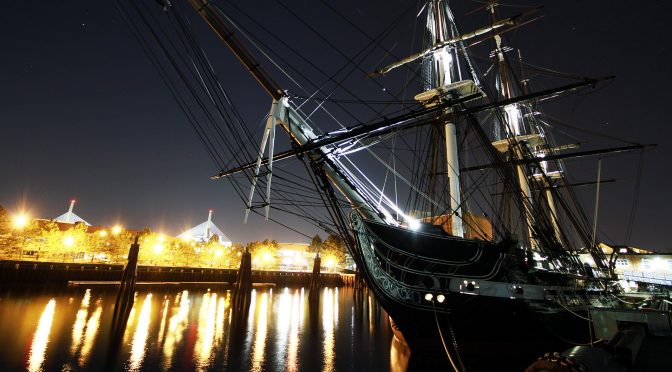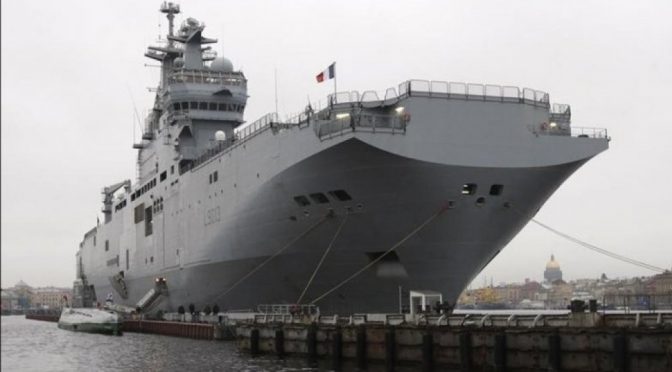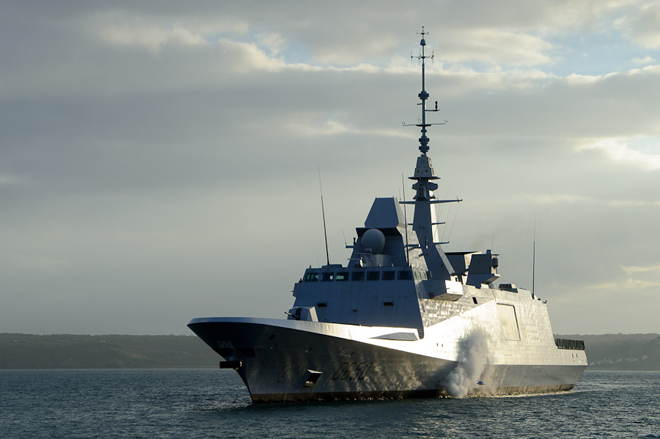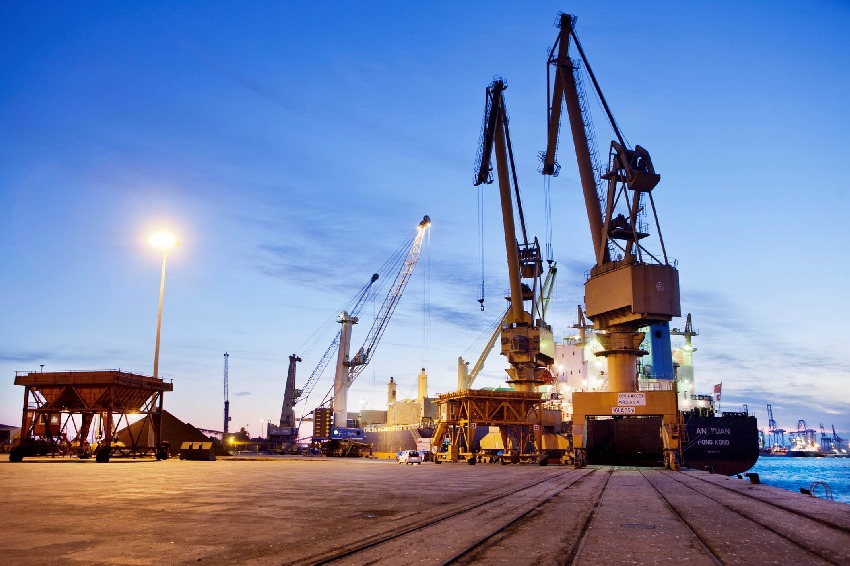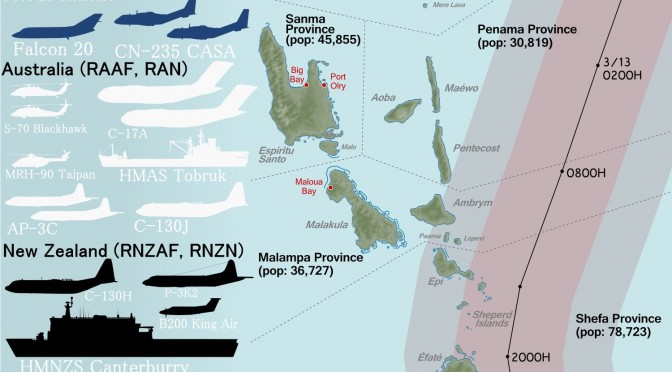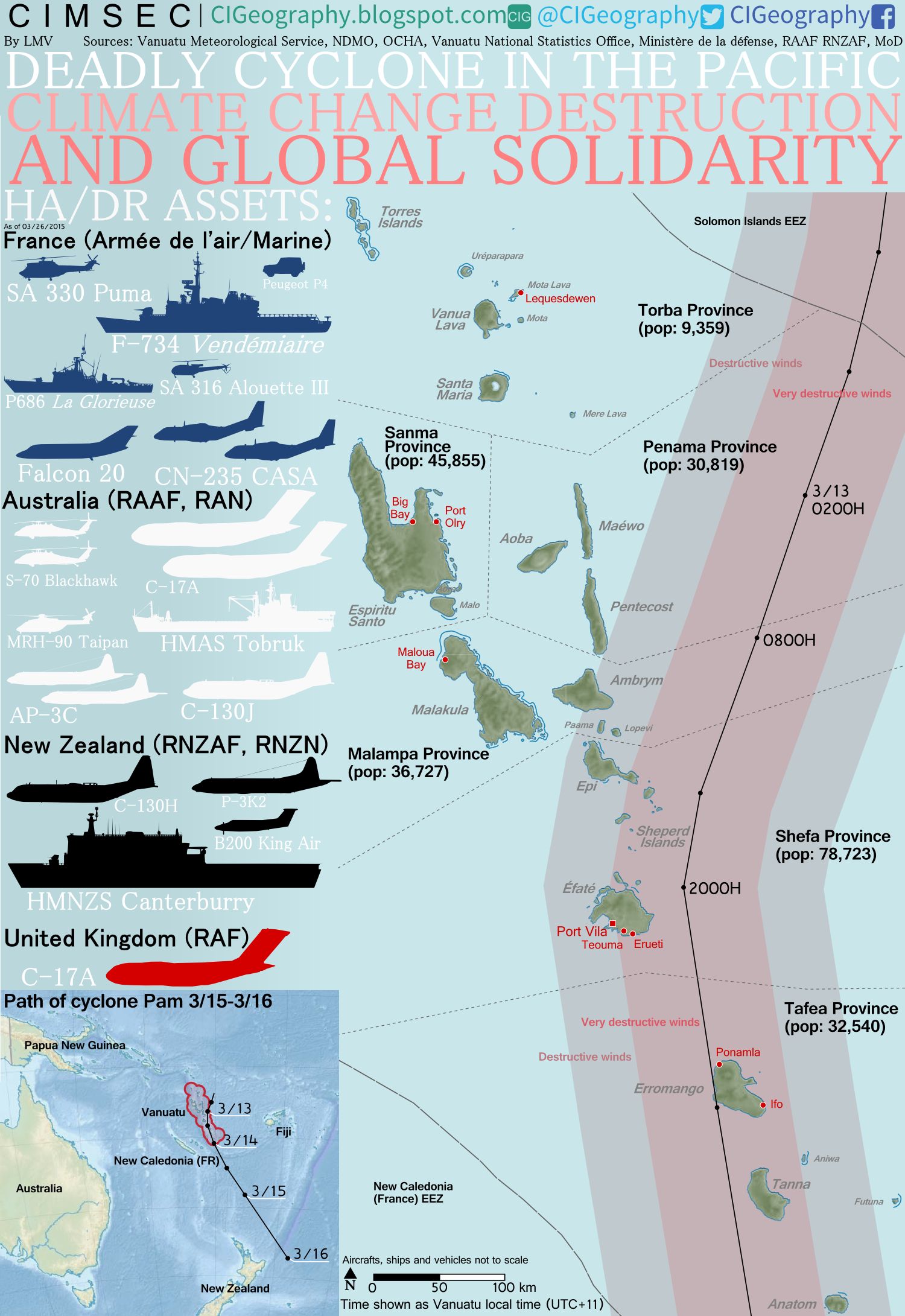By Dave Andre
In the spring of 1798, the United States found itself in an undeclared naval war with France. Known as the Quasi-War, this eighteenth century “half-war” holds valuable lessons for maintaining maritime superiority in the twenty-first century. This tumultuous period is the origin of the modern United States Navy, Marine Corps, and Coast Guard. During this time, the geopolitical situation in Europe was altering the maritime landscape worldwide just as the United States was developing its foreign policy. Europe’s upheaval and the United States’ first forays into international politics resulted in the Quasi-War. The conflict and the politics that surrounded it present three timely lessons for the United States as it focuses on maintaining maritime superiority in an evolving maritime domain. Foremost among these lessons is the notion that maritime superiority is temporal: the maritime security environment is perpetually evolving; a superior navy today may be inferior tomorrow. Secondly, the dynamic maritime environment requires broad strategic foresight from politicians, military planners, and civilians. Lastly, the conflict illustrates the need for an integrative maritime strategy, which incorporates all the elements of maritime power at a nation’s disposal. These lessons have applicability across a wide spectrum of maritime issues, from shipbuilding and operational art to budgeting and politics.
Preface
While the U.S. Navy traces its origins to 13 October 1775, that beginning was fleeting. Upon the conclusion of the War of Independence, the United States disbanded the Continental Navy and the ships, seamen, and officers returned to civilian life. Despite the ratification of the Constitution of the United States in 1789, which empowered Congress “to provide and maintain a Navy,” it was not until five years later — in 1794 — that Congress authorized the procurement of six frigates, and yet another four years before those frigates were commissioned.1 Through authorizing the procurement and staffing of six frigates, Congress set in motion the origins of the modern U.S. Navy we know today. Distinct from the Continental Navy by virtue of its mission — defending the sovereignty of the United States—the modern U.S. Navy’s origins in the Quasi-War defined many of the relationships and procedures used today.
Prologue to War: “Millions for defense, but not one cent for tribute…”
In 1789, the United States was looking inward with early American foreign policy focused on isolationism and neutrality. Two documents—the Proclamation of Neutrality and the Naval Act of 1794 – would come to define relations with the two nations most important to the initial development of the United States – France and Great Britain. The Proclamation of Neutrality issued by George Washington in 1793, declared that the United States would be neutral in the dispute between Britain and revolutionary France. Believing that involvement in a war between France and Great Britain would be an economic and diplomatic disaster, the proclamation stated, “the duty and interest of the United States require, that they should with sincerity and good faith adopt and pursue a conduct friendly and impartial.”2 Shortly after, in response to the threat posed by Barbary Pirates, the United States Congress reluctantly passed the Naval Act of 1794, authorizing the building and equipping of six frigates.3 Rectifying foreign policy ideals of neutrality with worldwide threats required concessions.
As the United States developed its foreign policy, balancing ideology against practical security concerns, war broke out between Great Britain and Revolutionary France. The Proclamation of Neutrality did not prevent British harassment of American merchant vessels and the United States and Britain drifted close to war.4 Therefore, eighteen months after proclaiming neutrality, the United States and Great Britain signed the Jay Treaty, which attempted to resolve unsettled issues from the War of Independence and put an end to British harassment of American merchantmen (impressment was the biggest gripe).5
Rectifying isolationist foreign policy ideals with a world at war required concessions. The French and British had been at war since 1793 and the French viewed the Jay Treaty as siding with Britain.6 Therefore, securing peace with the British meant angering the French, who felt betrayed. However, in 1795, resolution with the British took precedence. Feeling threatened and betrayed by this Anglo-American relationship, France retaliated. This retaliation took many forms, most notably French privateers began to attack and harass American merchant ships. Thus, United States merchants felt little relief – in essence trading British attackers for French.
Using an article from the Treaty of Commerce and Amity between the United States and France, which required that during wartime merchant ships provide detailed certificates (something American vessels rarely possessed) for the crew and cargo, the French boarded, seized, and sold more than 300 American vessels in 1795.7 Increasing the provocations, in 1796, France issued orders to attack American ships. Escalations continued, and by August 1796, French agents in the West Indies were issuing directions to attack American merchant ships.8 Over the course of the following nine months the French captured 316 American merchant vessels – more than six percent of the nation’s merchant ships. 9 The economic toll on American merchants was severe.10 Despite receiving authorization in 1794 to construct six frigates, the United States remained incapable of countering the French transgressions.
These maritime provocations were the tinder of war, but the XYZ Affair in July 1797 lit the fuse. President Adams dispatched three U.S. envoys to France as part of diplomatic efforts to avert war. Upon the U.S. envoys’ arrival, three French agents, working on behalf of French Foreign Minister Talleyrand, attempted to negotiate a bribe and a loan before negotiations even began.11 The U.S. envoys, outraged, sent word of the attempted demands back to President Adams, who in turn sent the report to Congress (substituting the agents names with the letters X, Y, and Z). As news of the scandal broke, the slogan “millions for defense, but not one cent for tribute” became the rallying cry of an offended citizenry.12 President John Adams and the Federalists seized upon this national anger to bring the U.S. Navy into being.13 Recognizing the unique nature of the maritime domain and the importance of a navy, Congress established the Department of the Navy on 30 April 1798 with Benjamin Stoddert in the lead.14 A month later, the Congress authorized the capture of any armed French vessels located off the coast of the United States.15 However, the Constellation, Constitution and United States were not yet fit for duty. Undeterred, the Navy set about engaging the French with the sloop USS Ganges, dispatching it to guard the coast between Long Island and Chesapeake.16 Six weeks later, Congress appropriated the necessary funds to complete the frigates USS Congress, USS Chesapeake and USS President.17
In June, the USS Constellation and the USS United States joined the USS Ganges. Moreover, on July 7, 1798, Congress rescinded all treaties with France.18 The same day, the USS Delaware captured the French privateer La Croyable off the shores of New Jersey.19 Two days later, President Adams signed “An Act Further to Protect the Commerce of the United States,” thereby authorizing military force against France.20 Besides public armed vessels, this Act authorized the president to “grant commissions to private armed vessels, which shall have the same authority to capture, as public armed vessels.”21 Foremost, this act illustrated that the United States was not going to have its sovereignty questioned – even by a former ally such as the French who just a few years before had helped the United States secure their sovereignty in the Revolutionary War. Less explicitly, the President and some congressional leaders began to see the United States’ prosperity as inextricably tied to its maritime security and acquiring and maintaining that maritime security required a navy.22 While the debate over a permanent navy continued, the events of the preceding five years went a long way towards securing its permanence.
Auspicious Beginnings: “We are not afraid…”
Despite being outgunned and relatively inexperienced, the U.S. Navy performed well during the Quasi-War. Considering its limited naval assets at that time, engaging with the much more powerful French Navy was audacious. This audacity, backed up by the nerve and grit of civilian mariners and buoyed by a political infrastructure that appreciated the maritime domain, proved fruitful. While these characteristics account for much of the success that the United States enjoyed, they are not the whole story. Political events in Europe aided the United States’ cause in no small part. The French Navy, depleted by years of war with the British and purges from the French Revolution, was not as formidable a foe as it could have been. In addition, the Royal Navy, eager to dispatch the French, willingly assisted their former colony’s fledgling navy. These factors, coupled with an underestimation of the United States’ willpower, explain why the French Navy struggled to counter the United States’ limited naval power.
American naval vessels had early successes, seizing nineteen vessels from French privateers in the winter of 1798–99.23 In February 1799, the first major battle of the Quasi-War occurred between the USS Constellation (38-guns) and the French frigate L’Insurgente (36-guns) with the Constellation emerging victorious.24 A year later, the Constellation engaged in battle against the superior La Vengeance, a 52-gun Frigate.25 While the battle ended in a draw, the aggressive American naval response sent a clear message to their French adversaries that echoed John Adam sentiments – “We are not afraid.” By the time the Treaty of Mortefontaine ended the hostilities in September 1800, the United States had captured 85 French vessels and the French lost approximately 2,000 merchant vessels to U.S. privateers.26 Meanwhile, the United States lost only one ship – the USS Retaliation – during an engagement in November 1798 with two French frigates.27 Though these battles are indicative of the course of the Quasi-War, the U.S. Navy’s actions are only a part of a larger story.
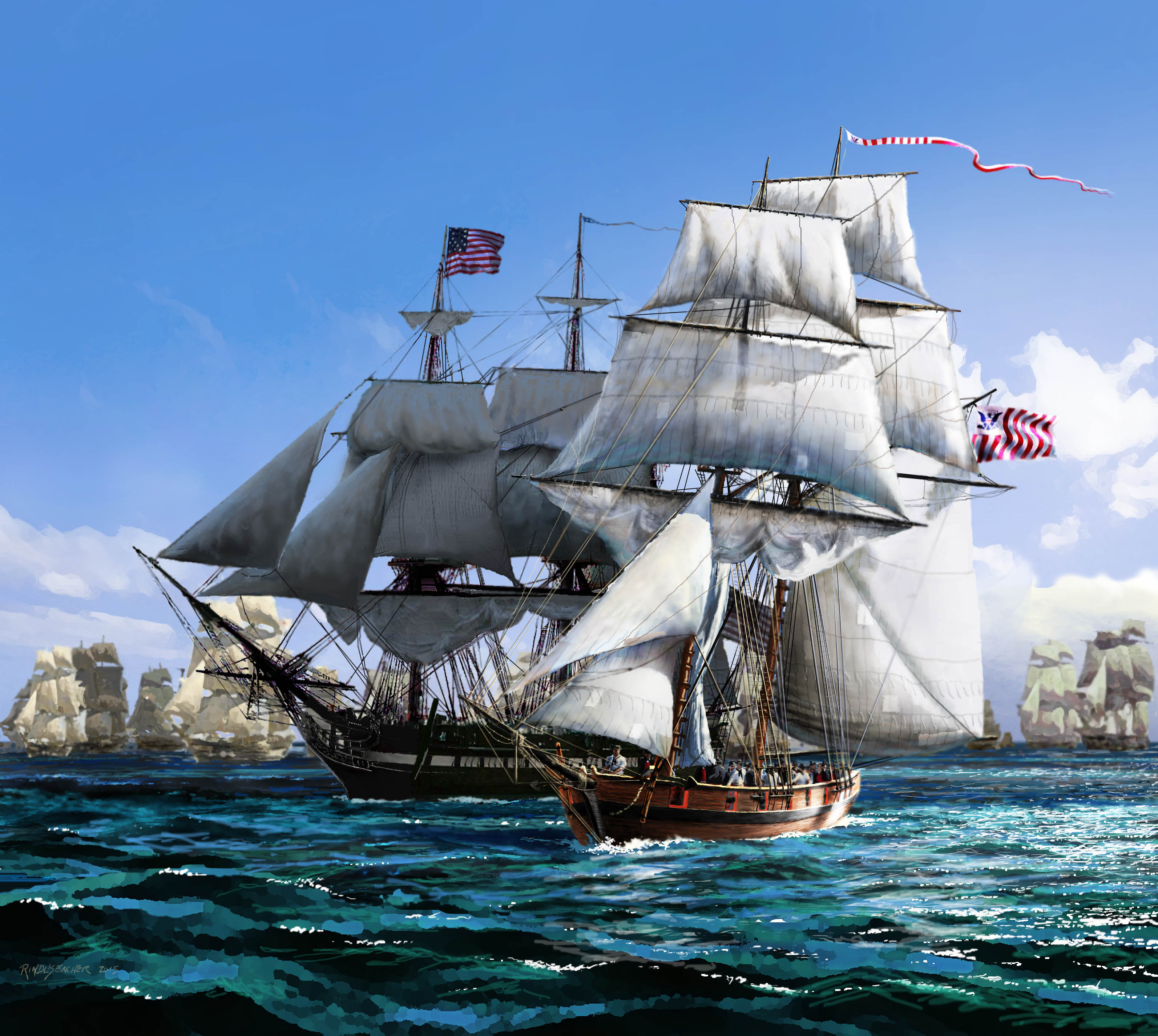
American successes during the Quasi-War were due, in no small part, to the successful employment of private mariners, the Revenue Cutters (the precursor to the U.S. Coast Guard), and some assistance from the Royal Navy.28 Throughout the course of the conflict, eight Revenue Cutters were at sea in support of naval operations along the southern coast and throughout the West Indies.29 These Cutters had a significant impact, taking eighteen of the twenty-two prizes captured by the United States between 1798 and 1799.30 Meanwhile, Letters of Marque authorized civilian mariners to act as surrogates to the Navy.31 Again, the impact was significant and immediate. In 1798 there were 452 civilian mariners armed in defense of the United States; that number rose to 933 the following year.32 The cooperation among these various maritime entities buoyed a fledgling U.S. Navy, setting the tone for a pattern of future successful engagements. The successful campaign waged by these maritime forces laid the groundwork for the peaceful resolution in 1800 of the Quasi-War.
Maintaining Maritime Superiority: Lessons from the Quasi-War
Though not explicitly mentioned, a variety of recent strategic documents on maritime superiority draw upon French and U.S. experiences during the Quasi-War. Three broad lessons from this period in early-American naval history become apparent: maritime superiority is not a permanent condition; maritime superiority requires broad strategic foresight across political, military, and civilian channels to prepare and design; and interoperability across the sea services is critical to the establishment and maintenance of maritime dominance – a powerful navy alone is not enough. These lessons, learned during the United States’ first military engagement with a foreign power, offer relevant guidance for military planners designing a maritime strategy for maintaining superiority.
First Lesson: Maritime Superiority is not a Permanent Condition
French experiences in the Quasi-War illustrate that maritime superiority is perishable. The CNO’s paper, A Design for Maintaining Maritime Superiority, implicitly acknowledges a specific lesson the French learned during the Quasi-War – without a proactive approach and strategic foresight, maritime superiority fades.33 The French Navy, stretched thin by years of fighting with the British, faced a United States that had awoken to the reality that its maritime superiority was as critical to its national security as its land borders. In addition, the turbulence of revolutionary France was not kind to the French Navy. Besides the financial hardships resulting from the chaos of revolution, purges, and resignations had deprived the French Navy of many of its best officers. The cardinal defect, therefore, was not the French ships, but manning and morale. Moreover, the Royal Navy, adept at keeping the French Navy bottled up in port, allowed little opportunity for training beyond port.34
By 1798, the French Navy was undisciplined and poorly trained, with estimates suggesting they were over 8,000 men short by 1799.35 Therefore, the over-tasked French Navy faltered and despite the French enjoying a numerical advantage and better-outfitted ships, the U.S. Navy – a few years old and with less than a dozen ships to its name – was able to repulse the French until they turned back to European matters. These manning and training shortfalls limited the French Navy’s ability to effectively prosecute the Quasi-War and the continued expansion of their engagements only served to exacerbate these underlying issues. The decline in capabilities, when combined with an expansive geographic footprint and steady operational tempo, degraded the French Navy’s ability to maintain maritime superiority. These limitations would continue into the Napoleonic Wars and cost the French Navy dearly.36
Currently, there is a surge in maritime power across the world. In the Asia-Pacific, China’s increasingly powerful and capable maritime capability allows for an aggressive policy in the region.37 In part a reaction to China’s maritime polices, the remaining countries of the Asia-Pacific region are upgrading, re-aligning, and expanding their maritime domain capabilities.38 The Indian Ocean Region and the Middle East are experiencing similar transformations in the maritime domain, led by India and Iran respectively.39 Meanwhile, the Russian Navy is flexing its might throughout the aforementioned regions, as well as the seas of Eurasia and the Pacific and Atlantic Oceans. The United States would do well to look at the French Navy’s experiences during the Quasi-War and realize that capacity is not the only factor in maintaining maritime superiority, and without the proper manning, training, and equipping that maritime superiority will be short-lived.
To echo Admiral Richardson, if the U.S. Navy fails to recognize and adapt to the evolving maritime security environment it risks falling behind competitors.40 Today, there are more competitors than ever before and the United States would do well to look back to the waning years of the 18th century for guidance. As the French fleet stretched itself thin across numerous theaters and campaigns, the Americans were re-establishing theirs with a very specific objective – defending their maritime domain. Conversely, the French, depleting their resources in an extended war with Britain and dealing with domestic turmoil, were stretched thin and unable to marshal the strength necessary to dominate the United States Navy in the Western Atlantic. Therefore, while the French Navy of the 1790s was superior to the U.S. Navy, the events of the Quasi-War illustrated that maritime superiority is a perishable advantage, even more so when not given the proper attention.
Second Lesson: Maritime Superiority Requires Broad Strategic Foresight
The Quasi-War illustrated that achieving and maintaining maritime superiority takes a composite of political willpower, military planning, and civilian ingenuity. Despite the United States Navy’s successes during the Quasi-War, it took years for the United States to commission the six frigates authorized by the Naval Act of 1794, which put victory in jeopardy. Even with the commissioning of the six frigates, the U.S. Navy was still a limited naval power compared to France. These limitations were only overcome by the integration of Revenue Cutters and privateers. Without these developed maritime services, the United States would have had little recourse against French transgressions. In The Future Navy, the CNO stresses the importance of having the right navy in the right place for our decision makers. Although a perceptive understanding of geopolitics can allow for some preventative measures, a navy being in the right place is primarily a reactive measure. Having the right navy though, is a proactive process – there exists a critical distinction between acting now versus then. As the CNO notes, to remain competitive, “we must start today and we must improve faster.”41 This strategic foresight needs to be broad and encompass political, military, and civilian dimensions; it needs to account for the time and effort it takes to fund, design, commission, and deploy new ships; it must account for the geopolitical situation and the status of enemies and allies alike; and it must acknowledge the time and funding necessary to sustain the material condition and readiness of the existing fleet.
When post-revolutionary America began construction of the original six frigates, there was intense debate surrounding the need for a standing navy. While provocations from Barbary pirates set in motion the re-constituting of the U.S. Navy, it took intense French harassment of merchants to rally enough support to actually build, train, and equip that navy. Four years later, those frigates would form the backbone of the maritime campaign against French provocations. Had it not been for the prescience and practical leadership of Presidents Washington and Adams, civilian leaders like Secretary of the Navy Benjamin Stoddert, and shipbuilders like Joshua Humphreys, the United States would have been unable to counter French provocations. Conversely, the French engagement of the United States during the Quasi-War was a sideshow that the French Navy was not prepared to effectively prosecute. The French government (known as the Directory during the Quasi-War) was engaged with the British at sea and revolutionaries at home and thus was unable to mount an effective strategy across political, military, and civilian lines.
In a time of continued budget restraints and political divisiveness, leaders must take a holistic approach when assessing the cost-benefit analysis of maintaining a large Navy. As historian William Fowler writes about the Quasi-War, “[it is estimated] that cost savings to the American merchant marine exceeded the U.S. Navy’s costs during the war.”42 In short, doing nothing can cost more than doing something. Leaders must realize that maintaining maritime superiority requires funding, design innovation, and a well-equipped workforce in addition to an operational strategy that effectively allocates naval resources.43 Anything less risks ceding the maritime superiority that the United States has enjoyed for decades.
Third Lesson: The U.S. Navy Needs to Work Closely with the Other Maritime Services
Borne of the first two, the last lesson concerns the need for cooperation across the sea services. The U.S. Navy performed admirably during the Quasi-War, but it was their effort combined with those of the privateers and Revenue Cutters that lead to victory.44 These entities – though transformed over the intervening years – still represent the formal elements of the United States’ maritime security infrastructure and their ability to work together proved critical during the Quasi-War. Across the spectrum of maritime operations, the increased integration of these maritime entities would enhance the nation’s ability to maintain maritime superiority.
The sheer diversity of forces working at play in the contemporary maritime security environment necessitates that the U.S. Navy, Marine Corps, and Coast Guard continue working toward a cooperative and integrated effort to support national objectives. Such interoperability proved critical during the Quasi-War and will prove useful again. As noted in the National Strategy for Maritime Security, “maritime security is best achieved by blending public and private maritime security activities on a global scale into an integrated effort that addresses all maritime threats.”45 There is promise in this increased integration. A Cooperative Strategy for 21st Century Sea Power – a joint U.S. Navy, Marine Corps, and Coast Guard strategy – details how to “design, organize, and employ the Sea Services in support of our national, defense, and homeland security strategies.”46 Shortly afterwards, the U.S. Navy and Coast Guard expanded on the guidance, delivering The National Fleet Plan: A Joint United States Navy and United States Coast Guard, which details steps taken to identify opportunity for interoperability in areas of logistics, warfighting, and strategy.47 Likewise, the Marine Corps after years of fighting land wars, is re-engaging with its amphibious roots.48 The interlocking relationships these documents envision are critical for maintaining maritime superiority.
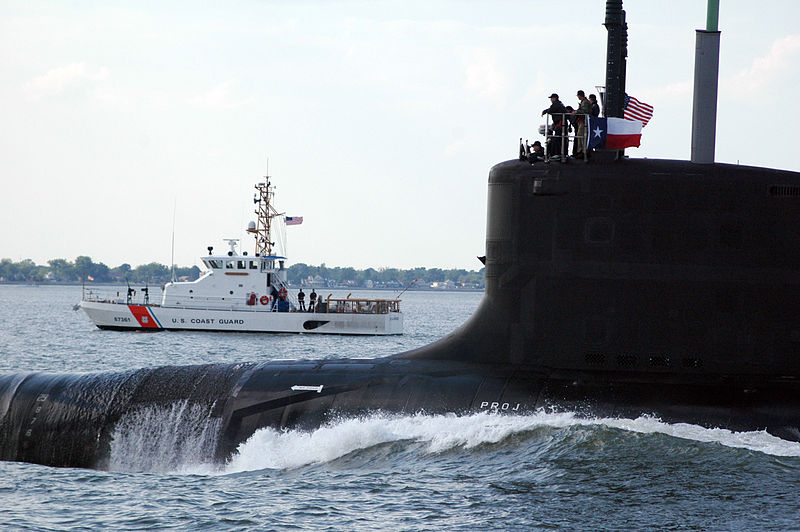
The relationship between the U.S. Navy, Coast Guard, and civilian mariners would do well to get “back to basics” by becoming acquainted with the lessons from the days of the Quasi-War. Then, like now, there is a shared mission that transcends the boundaries between civilian and military and between the various services. In the run up to the Quasi-War, the complexities of domestic politics and the global order made interoperability necessary and practical. Today, the same situation exists. Focusing on the strengths and limitations of the individual entities allows for better planning and efficient use of limited resources.
Conclusion
The world for all its changes bears a number of similarities to the late 18th century. Maritime shipping still represents the backbone of the U.S. economy – and by extension – its power and influence; contested waters still abound despite centuries of legal and practical solutions to remedy ambiguity; and the United States is again searching for that balance between neutrality and strength. As Seth Cropsey, former undersecretary of the Navy wrote, “Wide-ranging sea power is not so much an instrument of force –although that it is – as a condition of stable commerce, effective diplomacy.”49 It is this understanding that underpinned the establishment of the modern U.S. Navy and Marine Corps during the waning years of the 18th century as the United States faced a conflict that it was ill prepared to fight. Then, as now, geopolitics rarely waits for nations to get ready. You go to war with the forces you have.
LT David M. Andre is a former Intelligence Specialist, and has served as an Intelligence Officer and Liaison Officer assigned to AFRICOM. He is currently serving as N2 for COMDESRON SEVEN in Singapore. He can be reached at dma.usn@gmail.com.
The views expressed above are the authors’ alone and do not reflect the official views and are not endorsed by the United States Navy, the Department of the Navy, the Department of Defense, or any other body of the United States Government.
References
[1] U.S. Constitution, Article I, Section 8, Clause 1.
[2] Yale University. “The Proclamation of Neutrality 1793.” Accessed 01 June 2017. http://avalon.law.yale.edu/18th_century/neutra93.asp.
[3] George Washington’s Mount Vernon. “The Naval Act of 1794.” Accessed June 15, 2017. http://www.mountvernon.org/education/primary-sources-2/article/the-naval-act-of-1794/.
[4] United States Department of State. “John Jay’s Treaty, 1794-95.” Accessed June 4, 2017. https://history.state.gov/milestones/1784-1800/jay-treaty.
[5] Mariners Museum. “The Quasi-War with France 1798-1800: The Jay Treaty.” Accessed June 12, 2017. https://www.marinersmuseum.org/sites/micro/usnavy/05/05b.htm; https://history.state.gov/milestones/1784-1800/jay-treaty.
[6] United States Senate. “Uproar of Senate Approval of Jay Treaty.” Accessed June 12, 2017. https://www.senate.gov/artandhistory/history/minute/Uproar_Over_Senate_Treaty_Approval.htm.
[7]Treaty of Amity and Commerce Between The United States and France; February 6, 1778, http://avalon.law.yale.edu/18th_century/fr1788-1.asp.
[8] Donald R. Hickey, “The Quasi-War: America’s First Limited War, 1798-1801,” The Northern Mariner/le marin du nord, XVIII Nos. 3-4, (July-October 2008): 69.
[9] Larry J. Sechrest, “Privately Funded and Built U.S. Warships in the Quasi-War of 1797–1801,” The Independent Review, v. XII, n. 1, Summer 2007, ISSN 1086–1653, 2007, pp. 101–113.
[10] Ibid.
[11] United States Department of State. “The XYY Affair and the Quasi-War with France, 1798-1800.” Accessed June 13, 2017, https://history.state.gov/milestones/1784-1800/xyz.
[12] Carol Berkin, A Sovereign People: The Crises of the 1790s and the Birth of American Nationalism (New York: Basic Books, 2017), 204.
[13] Ibid.
[14] Naval History and Heritage Command. “United States Navy.” Accessed June 10, 2017, https://www.history.navy.mil/research/library/online-reading-room/title-list-alphabetically/e/founding-of-department-of-the-navy.html.
[15] Alchetron. “Original Six Frigates of the United States.” Accessed June 14, 2017. https://alchetron.com/Original-six-frigates-of-the-United-States-Navy-3900375-W.
[16] Leonard Guttridge and Jay Smith, The Commodores (New York: Harper and Row, 1969), 22; Papers of the War Department: 1784 to 1800. “War Office orders for the pilot charged with delivery of dispatches for the Ship of War Ganges.” Accessed June 15, 2017. http://wardepartmentpapers.org/document.php?id=26708.
[17] James J. Farley. To Commit Ourselves to our Own Ingenuity: Joshua Humphreys Early Philadelphia Shipbuilding. https://earlyphiladelphiashipbuilding.wordpress.com/chapter-5-from-high-tide-to-low-tide-1798-1801/.
[18] Carol Berkin, Christopher Miller, Robert Cherny, James Gormly, Douglas Egerton,Making America: A History of the United States, Volume 1: To 1877, (Cengage Learning, 2007), 178.
[19] David Petriello. Military History of New Jersey. (South Carolina: the History Press, 2014), 97.
[20] Benjamin Brown French, John B. Colvin. Laws of the United States of America: From the 4th of March, 1789, to the [3rd of March, 1845] : Including the Constitution of the United States, the Old Act of Confederation, Treaties, and Many Other Valuable Ordinances and Documents; with Copious Notes and References, Volume 5.
[21] Ibid.
[22] James A. Wombwell. “The Long War Against Piracy: Historical Trends,” Occasional Paper, Combat Studies Institute Department (2010): 67. http://www.dtic.mil/dtic/tr/fulltext/u2/a522959.pdf.
[23] Ken Hudnall, The Northwoods Conspiracy, (Grave Distractions Publication, 2011).
[24]Hampton Roads Naval Museum. “Pirates and Privateering in the New World.” Accessed June 18, 2017, http://hamptonroadsnavalmuseum.blogspot.sg/2016/07/pirates-and-privateering-in-new-world.html.
[25] United States Office of Naval Records. “Naval Documents Related to the Quasi War between the United States and France.” (GPO: 1935), 198.
[26] Yale University. “France—Convention of 1800: Text of the Treaty.” Accessed June 22, 2017. http://avalon.law.yale.edu/19th_century/fr1800.asp.
[27] American History Central. “Quasi War.” Accessed June 20, 2017. http://www.americanhistorycentral.com/entries/quasi-war/.
[28] James C. Bradford. America, Sea Power, and the World (United Kingdom: John Wiley & Sons, 2015): 31.
[29] United States Coast Guard. “The Coast Guard at War.” Accessed June 22, 2017. https://www.uscg.mil/history/articles/h_cgatwar.asp.
[30] Ibid.
[31] Gregory J. Sidak, “The Quasi War Cases and Their Relevance to Whether Letters of Marque and Reprisal Constrain Presidential War Powers,” 28 Harv.J.L.& Pub. Policy 465 (Spring 2005) 471- 473.
[32] American Armed Merchantmen, 1798, and American Armed Merchantmen, 1799-1801, in Knox, Quasi-War, 2: 147-97, and 7: 376-438.
[33] John Richardson, Adm. A Design for Maintaining Maritime Superiority (January 2016). http://www.navy.mil/cno/docs/cno_stg.pdf.
[34] Niklas Frykman . Seamen on Late Eighteenth-Century European Warships. (2009), 84. Internationaal Instituut voor Sociale Geschiedenis.
[35] Ibid.
[36] David Gates, The Napoleonic Wars 1803-1815, (New York: Random House, 2011)
[37] Jeremy Page, “ The Rapid Expansion of China’s Navy in Five Charts,” Wall Street Journal, April 10, 2015, https://blogs.wsj.com/chinarealtime/2015/04/10/five-charts-that-show-the-rapid-expansion-of-chinas-navy/.
[38] Geoffrey Till and Jane Chan, Naval Modernisation in South-East Asia: Nature, Causes and Consequences, (United Kingdom, Routledge, 2013): 113-116.
[39] Anit Mukherjee, C. Raja Mohan, ed., India’s Naval Strategy and Asian Security (Routledge, 2015); Shaurya Karanbir Gurung, “China’s Naval Efforts May Prove Wanting in Front of Indian Navy’s Experience,” India Times. http://economictimes.indiatimes.com/news/defence/chinas-naval-efforts-may-prove-wanting-in-front-of-indian-navys-experience/articleshow/57575868.cms.
[40] Yasmin Tadjdeh, “Navy Focuses on Maritime Superiority in Complex World,” National Defense, February 1, 2016. http://www.nationaldefensemagazine.org/articles/2016/1/31/2016february-navy-focuses-on-maritime-superiority-in-complex-world.
[41] John Richardson, Adm., The Future Navy White Paper, 2017. http://www.navy.mil/navydata/people/cno/Richardson/Resource/TheFutureNavy.pdf.
[42] William M. Fowler Jr., Jack Tars and Commodores: The American Navy, 1783–1815 (Boston: Houghton Mifflin, 1984): 41–42.
[43] Jessie Riposo, Michael E. McMahon, James G. Kallimani, and Daniel Tremblay, “Current and Future Challenges to Resourcing U.S. Navy Public Shipyards,” RAND Corporation (2017): Xviii. http://www.rand.org/content/dam/rand/pubs/research_reports/RR1500/RR1552/RAND_RR1552.pdf.
[44] United States Coast Guard. “Cutters, Craft & U.S. Coast Guard Manned Army & Navy Vessels.” Accessed June 23, 2017, https://www.uscg.mil/history/webcutters/cutterlist.asp.
[45] United States Department of State, The National Strategy for Maritime Security. September 2005, 13. https://www.state.gov/t/pm/rls/othr/misc/255321.htm.
[46] A Cooperative Strategy for 21st Century Sea Power. March 2015, https://www.uscg.mil/SENIORLEADERSHIP/DOCS/CS21R_Final.pdf.
[47] The National Fleet Plan: A Joint United States Navy and United States Coast Guard http://www.navy.mil/strategic/Fleet_Plan_Final.pdf.
[48] Otto Kreisher, “US Marine Coprs is Getting Back to its Amphibious Roots,” Defense Media Network, November 8, 2012, http://www.defensemedianetwork.com/stories/return-to-the-sea/2/.
[49] Seth Cropsey, MAYDAY: The Decline of American Naval Supremacy (New York: The Overlook Press, 2014).
Featured Image: CHARLESTOWN, Mass. (April 5, 2012) USS Constitution is moored to her pier at night in the Charlestown Navy Yard. Constitution is the oldest commissioned warship afloat and welcomes more than 500,000 visitors per year. (U.S. Navy photo by Sonar Technician (Submarine) 2nd Class Thomas Rooney/Released)

